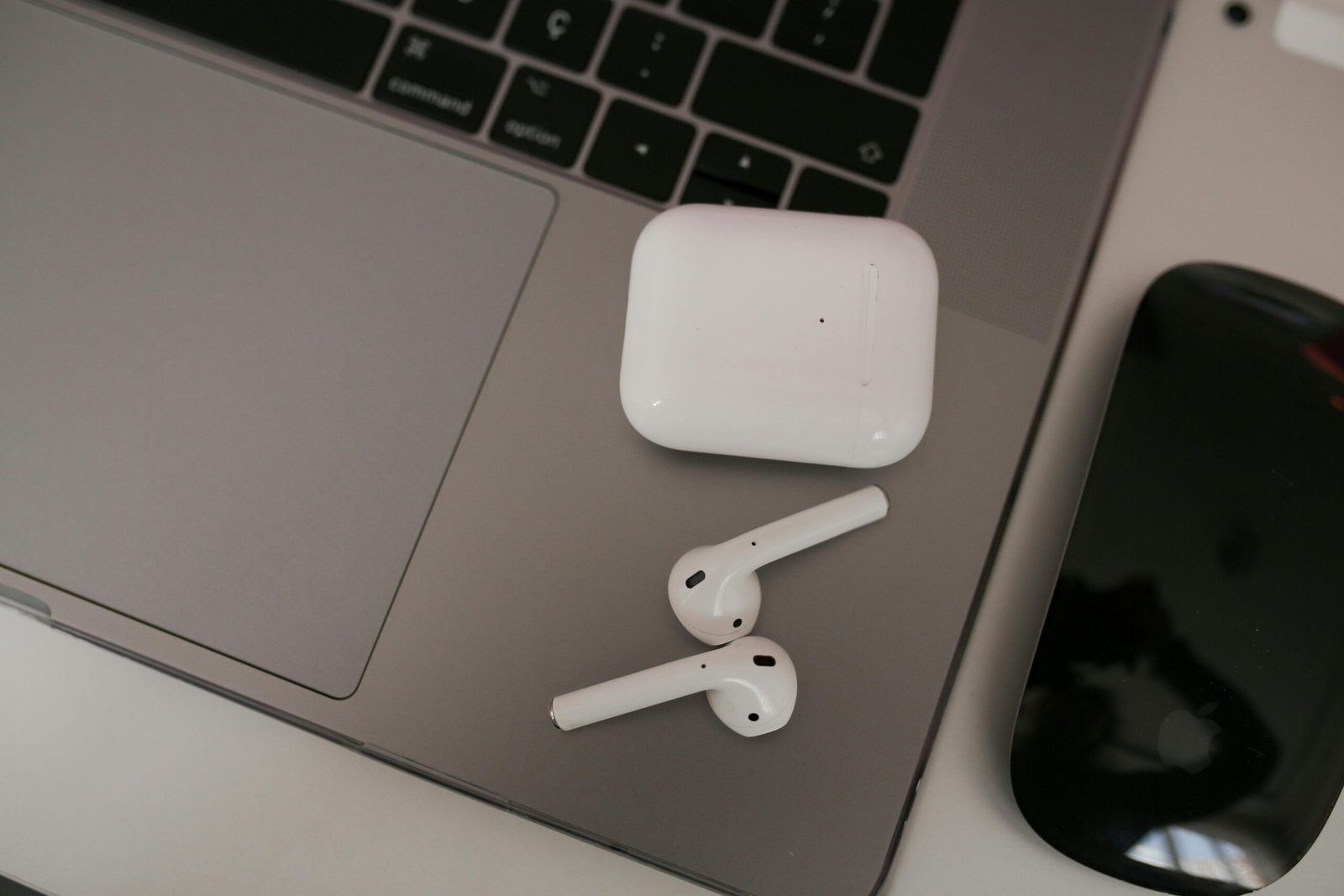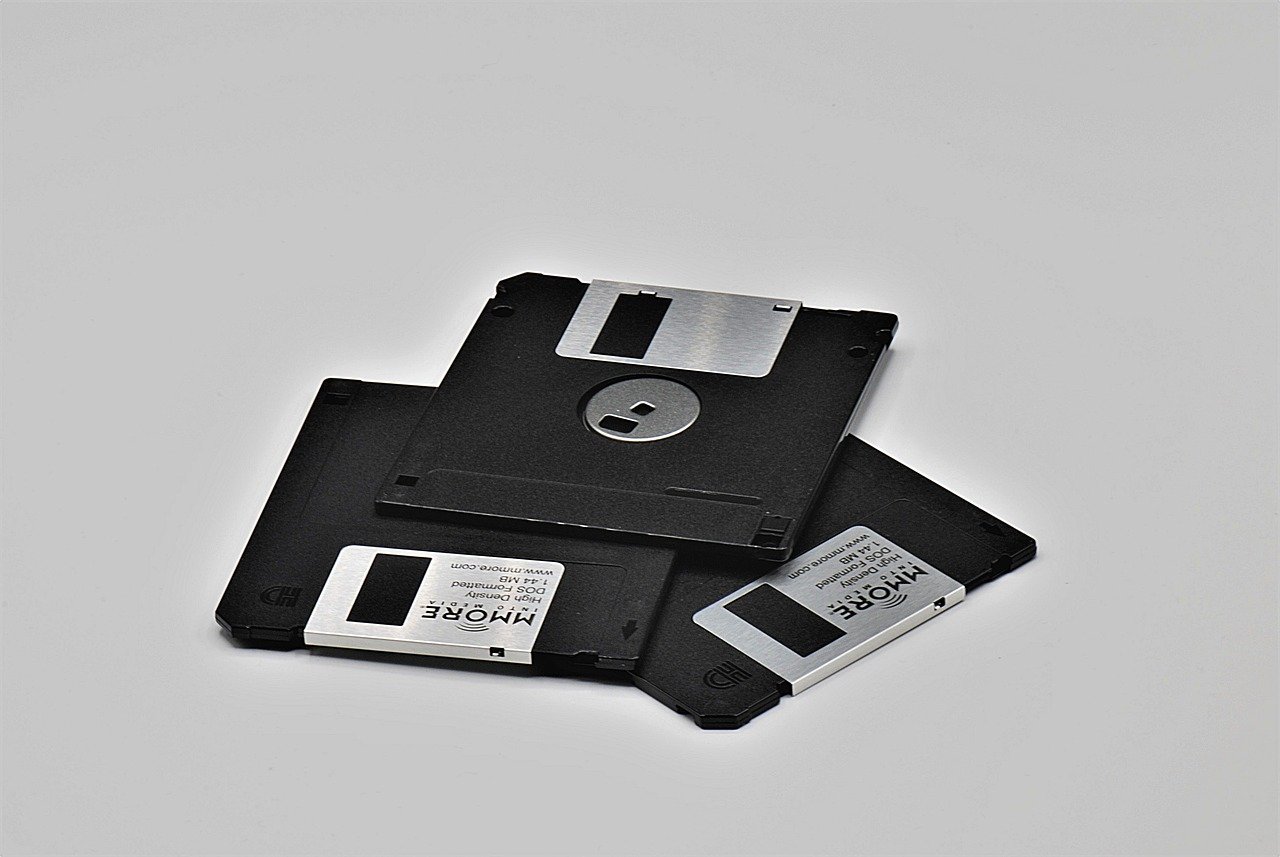Effortless Guide: How to Connect AirPods to Your Windows PC

Introduction
Ever wondered if you can use your AirPods with your Windows PC? The good news is, you absolutely can! AirPods, known for their seamless attach with Apple devices, can also be paired with Windows PCs. This guide will walk you through the process, step-by-step, to make it as effortless as possible. Whether you’re looking to use AirPods for work, gaming, or simply enjoying music, attaching them to your Windows PC can enhance your audio experience.
Why Use AirPods with Windows PC?
Using AirPods with your Windows PC comes with several advantages that can enhance your overall audio experience. Here are some key reasons why you might want to attach your AirPods to your Windows PC:
Superior Sound Quality
AirPods are known for their excellent sound quality. Whether you’re listening to music, watching movies, or playing games, AirPods deliver crisp, clear audio that can make your experience more enjoyable.
Wireless Convenience
One of the main benefits of AirPods is their wireless functionality. You can move around freely without being tethered to your PC by a cord. This is particularly useful if you’re on a video call and need to move around, or if you just want to sit back and relax while listening to your favorite tunes.
Compact and Portable
If you travel frequently or move between different workspaces, AirPods are a convenient option to bring along with your laptop or tablet.
Long Battery Life
AirPods offer a long battery life, allowing you to use them for extended periods without needing to recharge frequently. This is ideal for long work sessions, gaming marathons, or binge-watching your favorite shows.
Seamless Integration with Other Devices
While AirPods are designed to work best with Apple devices, they can also connect to Windows PCs, giving you the flexibility to use them across multiple platforms. This is great if you use a mix of Apple and Windows devices in your daily routine.
Improved Communication
AirPods come with built-in microphones that can be used for video calls, voice chats, and online meetings. The microphones are designed to reduce background noise, ensuring clear communication with your colleagues, friends, or family members.
Easy to Use
Effortless Guide: How to Connect AirPods to Your Windows PC
Pairing AirPods with a Windows PC is a straightforward process. Once connected, they can be set as your default audio device, making it easy to switch between different audio sources as needed.
Stylish Design
AirPods have a sleek and modern design that appeals to many users. They are not only functional but also look good, making them a popular choice for both casual and professional settings.
Pre-Requisites
Before you start connecting your AirPods to your Windows PC, there are a few essential pre-requisites to ensure a smooth and successful pairing process:
Check Windows Version
First, make sure that your Windows PC is running on a compatible version. Windows 10 or later is highly recommended for the best compatibility and user experience. Older versions of Windows may not support Bluetooth devices as seamlessly, which could lead to connectivity issues.
Ensure Bluetooth is Enabled
Most modern PCs come with built-in Bluetooth, but it’s always good to double-check. Here’s how you can ensure Bluetooth is enabled:
- Open Settings: From the Start menu, select ‘Settings’.
- Access Devices: In the Settings menu, click on ‘Devices’.
- Enable Bluetooth: Look for the ‘Bluetooth & other devices’ section.
Charge Your AirPods
Before starting the pairing process, make sure your AirPods are sufficiently charged. This will prevent any interruptions or issues due to low battery levels during the connection process.
Keep AirPods Close to the PC
For a successful connection, your AirPods should be close to your Windows PC during the pairing process. Keeping them within a few feet of your PC helps ensure a strong Bluetooth signal.
Update Bluetooth Drivers
To avoid any compatibility issues, make sure your Bluetooth drivers are up to date. You can do this by:
- Opening Device Manager: Right-click on the Start menu and select ‘Device Manager’.
- Finding Bluetooth: Expand the Bluetooth section.
- Updating Driver: Right-click on your Bluetooth device and select ‘Update driver’.
Steps to Connect AirPods to Windows PC
Connecting your AirPods to a Windows PC is a straightforward process. Follow these steps to pair your AirPods and start enjoying wireless audio on your PC.
Step 1: Open Bluetooth Settings on Windows PC
- Access Settings: From the Start menu, select ‘Settings’.
- Navigate to Devices: Go to the Settings menu and select ‘Devices’.
- .
- Open Bluetooth & Other Devices: Click on ‘Bluetooth & other devices’ on the left-hand side.
Step 2: Prepare Your AirPods for Pairing
To pair your AirPods, they need to be in pairing mode:
- AirPods Pro and Standard: Take your AirPods case and open the cover. Press and hold the case’s back button until the front LED light flashes white.
Step 3: Add a New Device on a Windows PC
- Click Add Bluetooth or Other Device: In the Bluetooth and other devices settings, select the addition (+) sign labeled ‘Add Bluetooth or another device’.
- Select Bluetooth: In the ‘Add a device’ window, click on ‘Bluetooth’.
Step 4: Select AirPods from the List
Effortless Guide: How to Connect AirPods to Your Windows PC
- Find Your AirPods: Once your AirPods appear in the list of available devices, click on them to start the pairing process.
- Wait for Connection: Your PC will take a few moments to establish the connection. You might see a ‘Connecting’ message followed by ‘Connected’.
Step 5: Confirm the Connection
- Check Connection Status: After your AirPods are connected, they should appear under ‘Audio’ in the Bluetooth & other devices settings with a status of ‘Connected’.
- Set as Default Audio Device: To ensure your AirPods are used for audio, you may need to set them as the default playback device. Right-click the sound icon in the taskbar, select ‘Open Sound settings’, and choose your AirPods from the dropdown menu under ‘Output’.
Troubleshooting Common Issues
Connecting AirPods to a Windows PC is generally straightforward, but sometimes you may encounter issues. Here are some common problems and how to resolve them:
AirPods Not Appearing in Bluetooth List
- Ensure AirPods Are in Pairing Mode: Double-check that your AirPods are in pairing mode with the LED light flashing white.
- Proximity to PC: Ensure your AirPods are close enough to your PC during the pairing process.
- Restart Bluetooth: Turn Bluetooth off and on again on your PC. You can do this in the Bluetooth & other devices settings.
- Restart Devices: Restart both your AirPods (by placing them back in the case and closing the lid for a few seconds) and your PC.
- Update Bluetooth Drivers: Ensure your PC’s Bluetooth drivers are up to date through the Device Manager.
Connection Drops Frequently
- Bluetooth Interference: Other Bluetooth devices in close proximity can cause interference. Try turning off other Bluetooth devices or moving them away from your PC and AirPods.
- Battery Levels: Low battery levels in your AirPods can cause connection instability. Ensure your AirPods are charged.
- Range: Keep your AirPods within a reasonable range of your PC to maintain a stable connection.
- Update Bluetooth Drivers: Make sure your Bluetooth drivers are current by checking for updates in the Device Manager.
Poor Audio Quality
- Check Audio Settings: In the sound settings, ensure your AirPods are set as the default playback and recording device.
- Bluetooth Interference: Similar to connection drops, interference from other devices can affect audio quality.
- Charge Your AirPods: Ensure your AirPods are fully charged to avoid any battery-related audio issues.
- Driver Updates: Keeping your Bluetooth drivers updated can improve audio quality. Check for the latest driver updates in the Device Manager.
- Reposition AirPods: Make sure your AirPods are correctly positioned in your ears for optimal sound.
AirPods Not Connecting Automatically
- Manual Connection: Sometimes AirPods do not connect automatically. Manually connect them by going to the Bluetooth settings and selecting your AirPods from the list of paired devices.
- Bluetooth Auto-Connect Settings: Check if your PC’s Bluetooth settings have an option for automatic reconnection and ensure it’s enabled.
- Re-Pairing: If automatic connection issues persist, remove the AirPods from your list of paired devices and pair them again from scratch.
One AirPod Not Working
- Check Battery Levels: Ensure both AirPods are adequately charged. Sometimes one AirPod might have a lower battery than the other.
- Clean Your AirPods: Clean your AirPods gently with a soft, lint-free cloth.
- Reset AirPods: Place your AirPods back in the case, close the lid, wait a few seconds, then open the lid and try reconnecting.
Maintaining the Connection
To ensure a stable connection, keep your AirPods within a reasonable range of your PC. Avoid placing them near other Bluetooth devices that might cause interference. Regularly update your PC’s Bluetooth drivers to prevent connectivity issues.
Advanced Tips for Using AirPods with Windows PC
Effortless Guide: How to Connect AirPods to Your Windows PC
Once you’ve successfully connected your AirPods to your Windows PC, you can enhance your experience with some advanced tips and tricks. These tips will help you customize your AirPods settings, improve functionality, and make the most out of your wireless earbuds.
Customizing AirPods Settings on Windows
While Windows doesn’t offer as many customization options for AirPods as macOS or iOS, you can still adjust some settings to improve your experience.
- Adjust Sound Settings:
- ‘Open Sound settings’.
- To alter the volume balance between the left and right AirPods, click ‘Device properties’.
- Microphone Settings:
- In the Sound settings, go to the ‘Input’ section and select your AirPods.
- Click on ‘Device properties’ to adjust the microphone volume and test the microphone quality.
Using Third-Party Software for Enhanced Functionality
Several third-party applications can provide additional features and better integration for AirPods on Windows PCs.
- MagicPods:
- MagicPods is a popular third-party app that offers features like battery level indicators, connection status, and more.
- Download and install MagicPods from the Microsoft Store. Once installed, you can view your AirPods’ battery status and customize settings directly from the app.
- Bluetooth Battery Monitor:
- This software can display the battery levels of connected Bluetooth devices, including AirPods.
- Download and install Bluetooth Battery Monitor from the developer’s website. The app will show battery levels in the system tray, allowing you to monitor your AirPods’ charge easily.
- Equalizer APO:
- Equalizer APO is a powerful audio equalizer that can improve sound quality.
- Download and install Equaliser APO from the developer’s website. Follow the setup instructions to configure it with your AirPods. You can adjust various audio parameters to enhance your listening experience.
Managing Bluetooth Interference
Bluetooth interference can affect the performance of your AirPods. Here are some tips to manage and reduce interference:
- Distance from Other Devices:
- Keep other Bluetooth devices away from your PC and AirPods.
- Router Placement:
- Wi-Fi routers can also interfere with Bluetooth signals. Ensure your router is not too close to your PC or AirPods.
- Update Firmware and Drivers:
- Keeping your AirPods’ firmware and your PC’s Bluetooth drivers up to date can help reduce interference and improve connectivity.
Switching Between Devices
AirPods are designed to switch seamlessly between devices, but you can make this process even smoother on a Windows PC.
- Manual Switching:
- Open the Bluetooth settings on your PC and select your AirPods to connect or disconnect them as needed. This can help when switching between your PC and other devices like your phone or tablet.
- Device Priority:
- If you often switch between devices, consider setting your PC or another primary device as the preferred connection.
Using AirPods for Gaming on Windows PC
Effortless Guide: How to Connect AirPods to Your Windows PC
While AirPods can be used for gaming, they may not be the best choice due to potential latency issues. Here are some tips to optimize your gaming experience:
- Low-Latency Mode:
- Some games and apps have a low-latency mode that can help reduce audio delay. Check the settings of your games or apps to enable this feature.
- Wired Connection:
- For the best audio performance during gaming, consider using a wired connection. You can use a Bluetooth adapter with a low-latency mode or an audio cable (with an appropriate adapter) to connect your AirPods to your PC.
Alternative Methods to Connect AirPods to Windows PC
While the standard Bluetooth pairing process is the most common way to connect AirPods to a Windows PC, there are alternative methods you can use if you encounter issues or need additional functionality.
Using a Bluetooth Adapter
If your PC doesn’t have built-in Bluetooth or you experience connectivity issues with the internal Bluetooth module, you can use a Bluetooth adapter.
- Purchase a Bluetooth Adapter: Choose a high-quality Bluetooth adapter that supports the latest Bluetooth version for better performance.
- Plug in the Adapter: Insert the Bluetooth adapter into an available USB port on your PC.
- Install Drivers: Follow the instructions provided with the adapter to install any necessary drivers.
- Pair Your AirPods: Follow the standard Bluetooth pairing process by putting your AirPods in pairing mode and connecting them through the Bluetooth settings.
Using an Audio Cable
For those who prefer a wired connection, you can use an audio cable with a Bluetooth adapter that supports a wired connection.
- Purchase an Audio Cable and Bluetooth Adapter: Get an audio cable compatible with AirPods (you may need a lightning to 3.5mm adapter) and a Bluetooth adapter with a 3.5mm audio input.
- Connect the Cable: Plug one end of the audio cable into the AirPods case and the other end into the Bluetooth adapter’s audio input.
- Connect the Adapter to Your PC: Insert the Bluetooth adapter into a USB port on your PC.
- Select the Audio Source: Go to your PC’s sound settings and select the Bluetooth adapter as the default audio device.
Using a USB Bluetooth Transmitter
A USB Bluetooth transmitter can provide a stable connection and enhance the audio experience, especially for gaming or high-quality audio streaming.
- Purchase a USB Bluetooth Transmitter: Choose a transmitter that supports low latency and high-quality audio streaming.
- Connect the Transmitter: Plug the transmitter into a USB port on your PC.
- Pair Your AirPods: Put your AirPods in pairing mode and connect them to the transmitter following the transmitter’s instructions.
- Configure Audio Settings: Ensure the transmitter is set as the default audio device in your PC’s sound settings.
Using a Dual-Boot System
This allows you to run Windows on your Mac and use your AirPods seamlessly across both operating systems.
- Install Windows on Mac: Use Apple’s Boot Camp Assistant to install Windows on your Mac. Follow the instructions to partition your hard drive and install the Windows operating system.
- Pair AirPods on Windows: Once Windows is installed, boot into the Windows partition and follow the standard Bluetooth pairing process to connect your AirPods.
Using Virtual Machine Software
This method can provide an alternative way to use your AirPods with Windows applications.
Effortless Guide: How to Connect AirPods to Your Windows PC
- Install Virtual Machine Software: Download and install VM software like Parallels Desktop, VMware Fusion, or VirtualBox on your Mac.
- Install Windows in the VM: Set up a new VM and install Windows. Follow the VM software instructions to configure the Windows environment.
- Connect AirPods to macOS: Pair your AirPods with macOS.
- Share Audio with VM: Configure the VM settings to share the macOS audio device (your AirPods) with the Windows environment.
Frequently Asked Questions
- Can AirPods be used for gaming on Windows PC? Yes, AirPods can be used for gaming, but there might be a slight audio delay due to Bluetooth latency.
- How to switch AirPods between multiple devices? You can switch AirPods between devices by manually disconnecting them from one device and pairing them with another.
- Do AirPods work with older versions of Windows? AirPods can work with older versions of Windows, but the process might be less straightforward, and you may experience compatibility issues.
Conclusion
With the steps outlined in this guide, you should be able to pair your AirPods effortlessly. Whether for work, entertainment, or gaming, AirPods are a versatile option for any Windows PC user.
FAQs After the Conclusion
1. How do I check the battery level of my AirPods on a Windows PC?
You can use third-party software like MagicPods or Bluetooth Battery Monitor to check the battery level of your AirPods on a Windows PC.
2. Can I use Siri with my AirPods on a Windows PC?
No, Siri is exclusive to Apple devices. However, you can use your PC’s voice assistant, like Cortana, if you have a compatible microphone.
Effortless Guide: How to Connect AirPods to Your Windows PC
3. How can I improve the audio quality of my AirPods on Windows PC?
Ensure your AirPods are fully charged and update your Bluetooth drivers. You can also adjust the audio settings on your PC.
4. What should I do if my AirPods won’t connect to my Windows PC?
Make sure your AirPods are in pairing mode and close to your PC. Restart both your AirPods and PC, and try the pairing process again.
5. Can I use AirPods as a microphone on my Windows PC?
Yes, you can select your AirPods as the input device in your PC’s sound settings to use them as a microphone.



